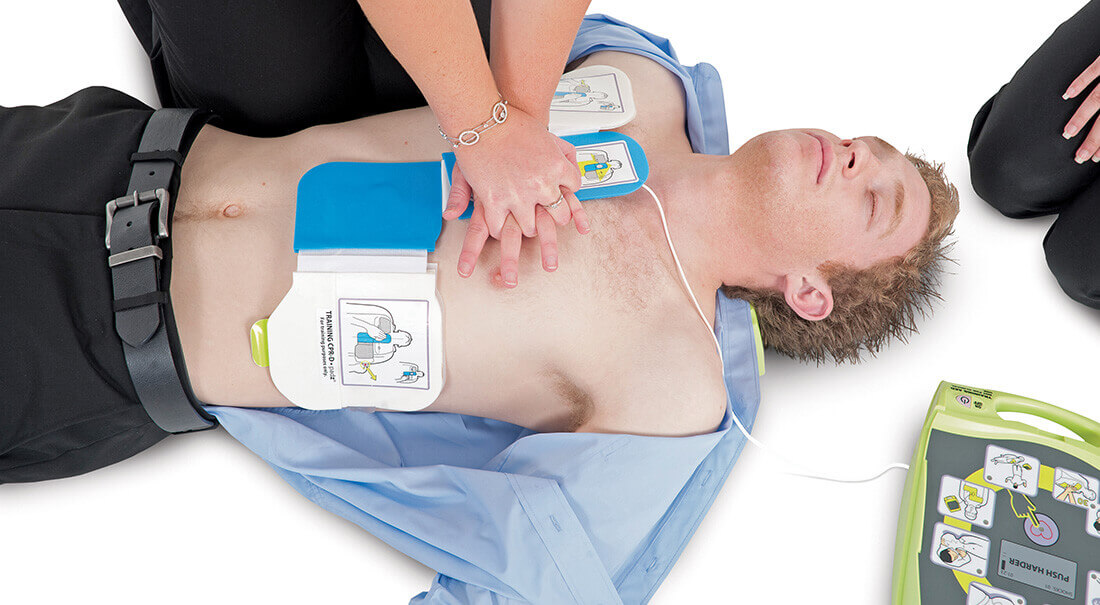Automated External Defibrillators on Aircraft

26 Aug 2015
Resuscitation Council statement …
Airlines are required to train cabin crew in first aid and to carry first-aid kits. Since 2004, the Federal Aviation Authority has required all US commercial airlines to carry AEDs on passenger flights that are large enough to have at least one flight attendant and to train cabin crew in their use.
The first airline to carry defibrillators was British Caledonian in 1986. Some UK-based current airlines carry AEDs, including Virgin, British Airways and EasyJet. At present there is no requirement for all airlines to carry defibrillators.
The exact number of cardiac arrests and sudden cardiac deaths that occur each year during flights on commercial passenger aircraft is unknown, due to the absence of mandatory reporting. It has been estimated that 1,000 people die during commercial flights each year. In-flight medical emergencies during air travel have become more frequent, due to larger numbers of passengers and more frequent travel by older people and people with chronic illness. Medical emergencies have been reported to occur with a frequency of 1 per 10 – 40,000 passengers.
When cardiac arrest occurs, any delay in starting resuscitation and in using a defibrillator to deliver a shock when needed will reduce the person’s chance of survival. Although in-flight cardiac arrest is relatively rare, survival from cardiac arrest when there is no defibrillator on board is extremely unlikely, due to the time that it takes to divert and land the aircraft to obtain the treatment needed.
There have been several reports (series and individual case reports) of successful resuscitation of passengers during air travel as a result of prompt recognition of cardiac arrest by trained flight attendants, prompt delivery of cardiopulmonary resuscitation (CPR) and prompt use of an on-board automated external defibrillator (AED). Success rates of up to 55% have been reported in people who received prompt CPR and AED use for cardiac arrest due to a ‘shockable rhythm’ (a chaotic heart rhythm that is treatable with a defibrillator). An AED will only save a life when the cardiac arrest is due to a shockable rhythm. These rhythms have been present in up to one third of cardiac arrests reported in aircraft passengers. Survival from an in-flight cardiac arrest that is not due to a shockable rhythm is extremely unlikely.
Even if the cardiac arrest rhythm is not shockable, attaching an AED to a person in cardiac arrest may help to guide the further action of those attempting resuscitation.
Unfortunately, some cardiac arrests occur when passengers are unobserved, for example when asleep or in the toilet. In such circumstances the delay in recognising the event, starting resuscitation and attaching an AED inevitably reduces the likelihood of a successful outcome.
We recognise the importance of public-access defibrillators in improving survival from sudden cardiac arrest. These AEDs are often located in places visited by large numbers of people, one of whom may suffer cardiac arrest (e.g. railway stations, airports, shopping centres, sports venues), or in places where delay in the arrival of an ambulance could greatly limit a person’s chance of survival unless a shock is given before the ambulance arrives (e.g. rural villages, golf courses). A commercial aircraft with a substantial number of passengers on board is analogous to the rural-village example. We strongly advocate voluntary action in the public interest by all airlines to equip commercial passenger flights with an AED and train their cabin crews in recognition of cardiac arrest and delivery of immediate attempted resuscitation.
Article courtesy of The Resuscitation Council (UK)
